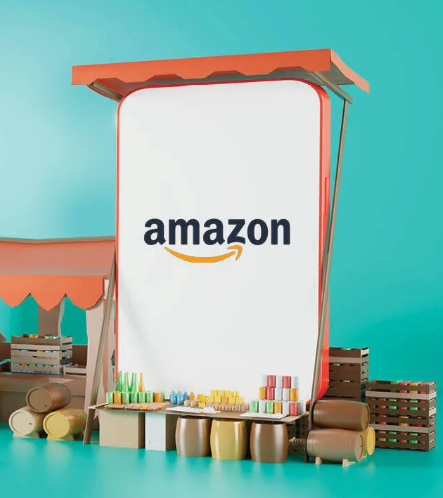Starting an e-commerce business can seem like a daunting task, but selling on Amazon presents an exciting opportunity to tap into a global marketplace with minimal upfront effort. Whether you’re looking to launch a product or create a side hustle, Amazon offers a powerful platform that makes selling easier. By following the right steps, even first-time sellers can succeed without needing a physical storefront or large inventory.
Here’s a comprehensive guide to help you get started and succeed in selling on Amazon.
Why Amazon?
Amazon has a unique edge over other platforms because it provides everything a seller needs to succeed. With a massive, global customer base, robust tools, and excellent customer trust, you don’t need to build everything from scratch. Selling on Amazon means leveraging an established ecosystem that handles much of the work—especially customer service and fulfillment.
Amazon’s Huge Customer Base
Each day, millions of shoppers visit Amazon with the clear intention to buy, not browse. This ready-to-buy audience gives you immediate access to a pool of active buyers who are already primed for a purchase. This is an essential advantage for new sellers, as it eliminates the need to build your own traffic or credibility. Amazon’s vast audience and trust-building tools such as customer service, return policies, and Prime shipping significantly boost your chances of success.
The Power of Amazon’s Fulfillment Services
Amazon’s Fulfillment by Amazon (FBA) service is a game-changer. When you use FBA, Amazon stores your products, picks and packs orders, handles customer service, and processes returns. This is particularly helpful for new sellers who don’t want to deal with the complexities of managing inventory and logistics themselves. Plus, products fulfilled by Amazon are eligible for Prime, which attracts even more customers.
Getting Started with Amazon Seller Central
To begin your journey as an Amazon seller, you need to set up an Amazon Seller account. The process is simple, but you will need some key documents to complete the registration, including:
- A valid bank account for payments
- A credit card for transaction fees
- A government-issued ID
- Tax information (SSN or EIN)
- A phone number for verification
Once you’ve registered, you’ll need to decide on a selling plan. Amazon offers two options:
- Individual Plan: No monthly fee, but a $0.99 charge per item sold.
- Professional Plan: $39.99 per month, suited for sellers planning to sell more than 40 items a month. This plan also provides additional features like bulk listing tools and access to advertising options.
What Can You Sell on Amazon?
Amazon supports a wide range of product categories, but not all items are allowed. If you’re starting out, books are a great option because they’re easy to list, ship, and find. You can also consider other categories such as electronics, home goods, clothing, and more. Some categories require approval, so be sure to check Amazon’s guidelines.
Listing Your Products
Once your account is set up, it’s time to create your product listings. To stand out in the crowded marketplace, your listings need to be clear, informative, and optimized for Amazon’s search algorithm. Here’s how to get started:
- Go to Seller Central and select “Add a Product.”
- Choose to list an existing product or create a new one.
- Craft a keyword-rich title.
- Highlight key product features using bullet points.
- Write a detailed and helpful product description.
- Upload high-quality images to showcase your product.
Managing Your Inventory and Orders
Once your listings are live, you need to focus on managing inventory and fulfilling orders. You can choose to handle fulfillment yourself (Fulfilled by Merchant, or FBM) or use FBA. Both options have their advantages:
- FBM: You manage shipping and packaging, but you bear all responsibility for delivery and customer service.
- FBA: Amazon handles everything, from storage to returns. This is a good option if you want to scale your business without worrying about logistics.
Selling Without Inventory
If you don’t want to keep inventory on hand, there are still ways to sell on Amazon. Dropshipping is a popular method, where you list a product, and when an order is placed, your supplier ships it directly to the customer. You never handle the product yourself. Alternatively, using FBA means sending your products in bulk to Amazon’s fulfillment centers, where they take care of the rest.
Dropshipping on Amazon
Dropshipping allows you to sell products without managing inventory. You partner with a supplier who ships directly to customers. However, it’s important to ensure your supplier’s shipments don’t include their branding, as this could violate Amazon’s policies. You must also be diligent in maintaining high-quality products and meeting customer expectations.
Using FBA for Efficient Fulfillment
With FBA, you send your products to Amazon’s warehouses, and they handle all the logistics. This system provides several advantages, including Prime eligibility, increased visibility, and better customer trust. Though FBA comes with fees, including storage and fulfillment costs, it’s often worth the investment for ease of use and access to Prime customers.
Costs and Fees for Selling on Amazon
While the cost to sell on Amazon can vary, here are the typical fees you should expect:
- Subscription fees: $0 for Individual or $39.99/month for Professional
- Referral fees: Typically 15%, though it varies by category
- Fulfillment fees: Based on the size and weight of your product
- Storage fees: Monthly charges for storing inventory at Amazon’s warehouses
- Advertising costs: Optional, but can boost visibility
For instance, selling a $30 item could cost you around $7 in fees if you’re using FBA.
Tips for Success on Amazon
To stand out and succeed, you must optimize your listings, encourage reviews, and use Amazon’s marketing tools. Here’s how:
- Optimize Your Listings for Search: Amazon’s A9 algorithm favors products with relevant keywords and high performance. Make sure your listings are complete with strong keywords, high-quality images, and detailed descriptions.
- Request Reviews: Positive reviews build credibility and improve your search ranking. Use Amazon’s tools to follow up with customers and encourage honest feedback.
- Utilize Amazon’s Marketing Tools: Sponsored Products and promotional tools like Lightning Deals can help boost visibility for your listings. Use these strategically to get your products in front of more potential customers.
Start Your Amazon Journey Today
Selling on Amazon offers a straightforward path to e-commerce success, especially with tools like FBA and a massive customer base. By creating optimized listings, managing your inventory, and utilizing Amazon’s fulfillment services, you can start earning with minimal hassle. The key is to stay consistent, continue learning, and refine your approach as you grow.
Ready to get started? Take the plunge and list your first product—Amazon’s platform is ready to help you succeed.



